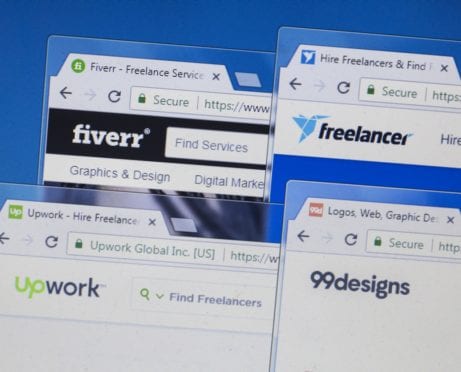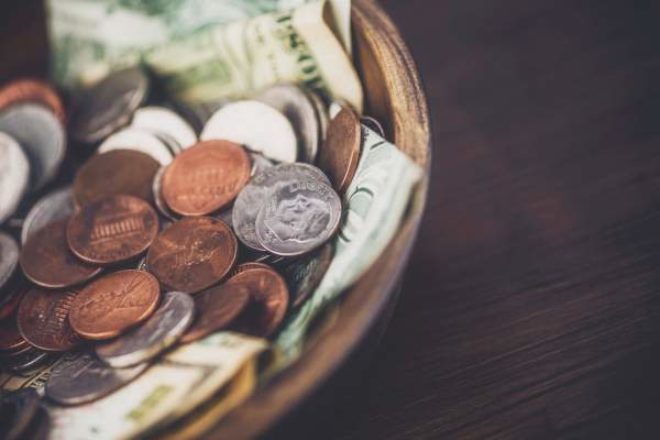
CentSai prides itself on writing independent reviews. Check out our rubric to see the objective standards we use.
Highest Possible Total Score:
I consider myself to be a quasi-informed skeptic of cryptocurrency (the myriad of digital assets that erupted starting with Bitcoin’s debut in 2009). I am curious enough to write this review from the standpoint of knowing precious little about the sector — other than what I read in the headlines. So for me to open a Coinbase account took courage.
The words that describe my mindset about crypto both start with the letter F: fear and FOMO. The number of digital currencies, now in the thousands (with names such as Dogecoin, Ethereum, Cardano, and Tether), combined with the meteoric rise and adoption of Bitcoin and other cryptos, is remarkable.
At the start of 2014, a single Bitcoin, for example, traded at about $125; this May, the cost touched a mindboggling $64,000, while flirting with a market capitalization of $1 trillion, according to Coindesk, a cryptocurrency media platform.
Large companies are starting to embrace crypto, mostly Bitcoin. And I think most people realize that blockchain — the secure and decentralized technology that powers cryptocurrencies — is no longer a novelty. Regardless of what you think about cryptocurrency, each week the sector becomes more mainstream.
The jury is still out for me as to whether crypto is:
- overly hyped
- a paradigm shift whose train already left the station
- an opportunity to still earn (or lose) money, based on market volatility — which is not for the faint of heart.
If you are game for investing in Bitcoin, there are several platforms available. Exchange-traded funds (ETFs) are even sprouting up — one of the first, Bitwise Crypto Industry Innovators, offers diversified crypto exposure. I decided to try out Coinbase.
 Ease of Use Score:3
Ease of Use Score:3

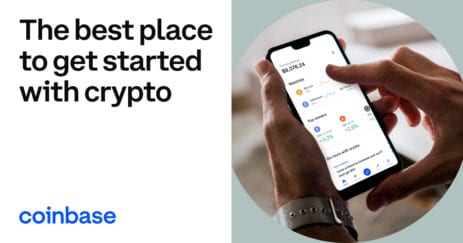 Signing up for Coinbase — with its $5 Bitcoin promo — seemed safe enough. I willingly provided a picture of my government ID along with some basic personal details. Two-factor authentication brought me to my digital dashboard, where indeed I had $5 of Bitcoin to my name. That excitement was enough for one day.
Signing up for Coinbase — with its $5 Bitcoin promo — seemed safe enough. I willingly provided a picture of my government ID along with some basic personal details. Two-factor authentication brought me to my digital dashboard, where indeed I had $5 of Bitcoin to my name. That excitement was enough for one day.
About a week later, I returned to see my account balance had dropped to $4.27, a 16 percent dip, which isn’t unusual in cryptocurrency investing. I started to explore the site and came across an opportunity to “earn and learn.”

I dedicated a half hour to watching short (one- to three-minute) videos about different crypto offerings, and I earned each time I completed a video and answered a question correctly. At the end of my “earn and learn” session, my portfolio boasted $29 in crypto assets, and I had yet to spend a dime of my own money.
I think this may be a one-time feature. The dozen times I tried to watch a video to “earn and learn” after that initial session, I was told there was no more crypto to be had, but I could watch the videos anyway. No thanks.
The articles and videos on Coinbase’s blog about timely and pertinent topics (how to manage crypto on your taxes or how to manage volatility with dollar-cost averaging) are informative.
I would, however, like to see more content on the bearish side, for balance. I would say the “earn and learn” content is akin to sponsored content about a particular brand and how it works.
During my third week, I decided to sync my PayPal and bought $100 of Ethereum. The transaction cost about $4 in fees, about which I will go into more depth below.
It was surprisingly (and scarily) easy: I hit trade on the left side menu, put $100 as the amount I wanted to invest, and selected Ethereum. The trade was processed within a minute with an email confirmation.
The thing about crypto is I don’t know if I am buying in a dip — or at its last peak.
Coinbase’s user experience is solid. I was able to navigate from my portfolio overview, to a lengthy cryptocurrency list — many names and symbols mimic the stock market but look like a foreign language nevertheless. The left side nav let’s you trade, learn, scroll through cryptocurrency, or view your holdings.
When you want to make a trade, click on the cryptocurrency of interest and a pop-up will appear, allowing you to buy or sell. You have the option of connecting Coinbase to your bank, PayPal, or debit card or you can wire transfer hard currency to Coinbase.

I appreciate the ability to earmark crypto I want to be updated on, and the articles section is robust.
The platform also promotes dollar-cost averaging, or putting a set amount of money in crypto at regular intervals, which should help to balance out the volatility over time.
This investing strategy, which can be used for any asset class (stocks, ETFs, or mutual funds, for example), allows you to ease into the market. It alleviates the pressure of trying to buy at the “right” time, which doesn’t exist.
Dollar-cost averaging allows an investor to put a set amount in asset X at predetermined regular intervals (weekly, biweekly, monthly), purchasing more shares when the prices are relatively lower and fewer shares when prices are relatively higher.
As a content creator myself, I appreciate the educational videos and articles on Coinbase. It’s a mix of the site’s own content as well as curated content from other financial media. And though there are articles on what to do if crypto declines, there is little for the skeptic.
There is also a section on the site for tax documents, which I hope are issued only when money is gained or lost. Remember that cryptocurrency is taxed as an asset. You incur a taxable gain or loss upon selling or exchanging the asset.
 Bang for Your Buck Score:2.5
Bang for Your Buck Score:2.5

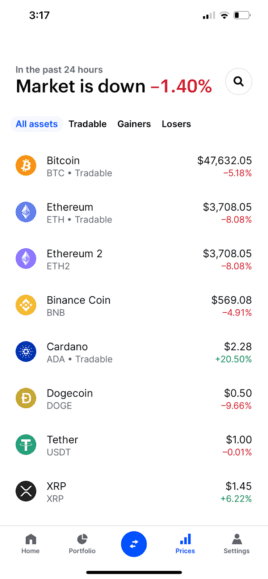
With Coinbase, you can invest in different singular cryptocurrencies. But you can also invest in the Coinbase platform itself (COIN on Nasdaq). Or you can go for broad exposure of the sector by investing in the ETFs that have begun to appear.
The price of trading on Coinbase is detailed, and I appreciate the transparency of various transactions and their associated fees.
As an example, if you purchased $100 of Bitcoin, you are charged about 0.5 percent on both your purchases and sells, in addition to a “Coinbase fee,” determined by “which is the greater of (a) a flat fee or (b) a variable percentage fee determined by region, product feature, and payment type.”
This is the type of mumbo jumbo financial speak that makes my head spin, so I’d use this chart as a base reference, paying attention to the asterisks below.
It’s not difficult to see why Coinbase is profitable if it is making about 4 percent on a $100 transaction. I’d imagine over time competition will drive down the fees, but it’s good to know what you’re paying to trade up front. Also key: Coinbase can be used with a myriad of currencies, not only the U.S. dollar.
There are also ways to earn rewards by buying particular cryptos that are displayed on the right side of your dashboard.
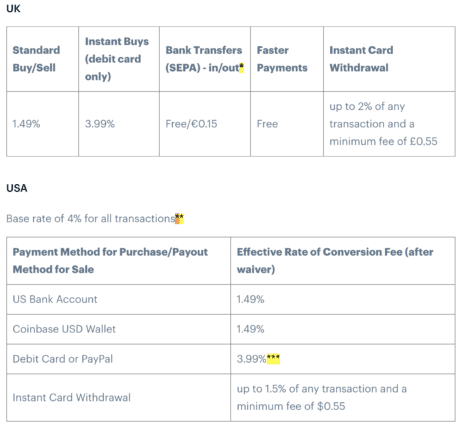
Coinbase lets its users know that it pools your cash balance with the balances of other U.S. Coinbase users. The funds may be held in a custodial account at a U.S. bank, in a money market fund, or in U.S. treasuries.
Funds held in pooled custodial accounts at banks are Federal Deposit Insurance Corporation (FDIC) insured; those held otherwise are not. You cannot specify where your assets are pooled, so you don’t know if FDIC will apply to you. Non-U.S. users’ cash assets are pooled in custodial accounts.
That said, if the market went belly up, I am not sure how confident I am that my money/crypto assets would be easily trackable (this is largely due to the fact that I have earned or bought crypto, but have not tried to sell it yet).
And I would not want to be in a position to rely on Coinbase if I were in a bind.
One of my biggest questions is about risk. I have a fear about my money disappearing or being inaccessible.

With Coinbase, you can also do something called staking. Staking lets you earn income with your crypto by contributing to what the platform calls “the Proof of Stake network” of a particular asset.
When you stake your crypto, Coinbase explains, you make the underlying blockchain of that asset more secure and more efficient. And in exchange, you get rewarded with more assets from the network.
Not all states allow staking. Maybe it’s a great way to make money, but I stay away from transactions I don’t fully understand. It could be for those who have more understanding of the landscape.
 Customer Service Score:1
Customer Service Score:1

For all the hype, Coinbase’s current customer service is — frankly — lacking. When starting my review, I wrote a message through their “contact us” link, which wasn’t easy to find. I received a rote email acknowledging receipt of my message.
Then three days later, I received a second email that directed me to Coinbase’s FAQ section. I had been clear that I was writing a review, so I did need a human response. When I saw the Better Business Bureau (BBB) ratings, I decided to contact Coinbase through the BBB site.
I wrote to Coinbase twice. Once I received two automated responses. The second time was through the BBB. After three business days, I had still heard nothing.
 Reputation
Reputation


The platform started about a decade ago in 2012, and so it enjoys first-mover advantage as the largest cryptocurrency trading platform. In fact, Coinbase’s recent initial public offering on Nasdaq in May 2021, and its reported more than $1 billion in first-quarter revenue, further conveys the app’s popularity.
And Coinbase’s 56 million verified users, 8,000 institutions, and 100 countries show the widespread adoption of its desktop and app versions.
Coinbase has a 4.7/5 rating by more than 1.2 million users on the App Store and a 4.3/5 on Google Play with about half a million users. There is also a Pro version of Coinbase that in time I may graduate to — from what I read, it is for more seasoned crypto traders.
The BBB, however, rates Coinbase with a D — and took the unusual step of highlighting that many users have complained about being locked out of their accounts while trying to execute a trade.
Here is a summary of the type of complaints received:

Though I understand when companies grow quickly, their rise can outpace their customer service, Coinbase needs to vastly improve for more mainstream adoption.
When I read about traders wanting to sell an asset but they couldn’t log into their account, that troubles me, and it should trouble you, too.
The Bottom Line

The biggest negatives of Coinbase are cryptocurrency’s volatility and the platform’s customer service. Volatility may not be in Coinbase’s control, but customer service is. I hope the company fixes this pronto before people start flocking to the next shining object.
Yes, Coinbase is established, but other platforms (including Binance, WeBull, and El Toro) are starting to offer cryptocurrency trades and new ones seem to sprout up weekly, each with its own pros and cons.
Coinbase’s biggest challenge is educating a crop of impatient investors such as this one — and I’m an experienced investor.
Yes, people have become crypto millionaires. Those are the ones we laud, not the thousands of people who follow the herd and lose their money just like they do gambling in Las Vegas (see this screenshot from a well-known investing group I recently joined).
Despite the glitchy customer service, I am still curious about Coinbase, crypto, and whether in five years we will be embracing a new financial system. I’m reminded of a time when information packets of 1’s and 0’s traveling across this thing called the Internet was unfathomable — at least to me — as a Gen Xer growing up in the 1980s.
*Disclaimer: Limited while supplies last and amounts offered for each quiz may vary. Must id verify to be eligible and complete quiz to earn. Users may only earn once per quiz. Coinbase reserves the right to cancel the Earn offer.











